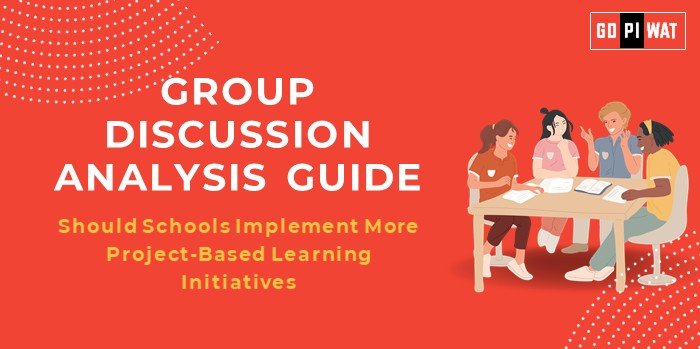📋 GD Guide: Should Schools Implement More Project-Based Learning Initiatives?
🌐 Introduction to Project-Based Learning (PBL)
Opening Context: “Education is evolving from rote memorization to fostering critical thinking and problem-solving skills. Project-Based Learning (PBL) has emerged as a key approach to preparing students for real-world challenges.”
Topic Background: PBL originated in progressive education movements of the 20th century and gained momentum with the digital era, encouraging collaboration and hands-on learning. Globally, nations are integrating PBL to enhance creativity and teamwork among students.
📊 Quick Facts and Key Statistics
– 🧠 Learning Retention: Students engaged in PBL demonstrate a 20% higher retention rate compared to traditional methods (Edutopia, 2022).
– 💼 Soft Skills Development: 85% of employers prioritize collaboration and problem-solving skills (World Economic Forum, 2023).
– 💰 Implementation Cost: Initial implementation requires a 30% increase in resource investment, offset by improved student outcomes.
👥 Stakeholders and Their Roles
- 👩🏫 Educators: Designing, mentoring, and assessing PBL projects.
- 👨🎓 Students: Active participation and development of critical skills.
- 🏛️ Government: Funding and integrating PBL into curricula.
- 🤝 Private Sector: Collaboration through internships, case studies, and real-world problems.
🏆 Achievements and Challenges
✨ Achievements:
- ✔️ Increased Student Engagement: PBL increases participation, with 70% of students rating it as more engaging than traditional methods (EdSurge, 2022).
- ✔️ Skill Development: Encourages problem-solving, teamwork, and communication.
- ✔️ Global Examples: Finland and Singapore have demonstrated the potential of PBL in fostering innovation.
⚠️ Challenges:
- 🚧 Resource Intensive: High demand for training, materials, and teacher-student interaction time.
- 🚧 Assessment Difficulties: Lack of standardized tools to measure progress effectively.
- 🚧 Global Comparisons: In countries like the US, PBL faces adoption challenges due to large class sizes and funding disparities.
💡 Structured Arguments for Discussion
✔️ Supporting Stance:
“PBL equips students with essential 21st-century skills, aligning education with real-world demands.”
❌ Opposing Stance:
“Traditional methods provide a more robust foundation in core subjects, which PBL risks diluting.”
⚖️ Balanced Perspective:
“While PBL offers transformative benefits, its success depends on overcoming logistical and resource constraints.”
🧠 Effective Discussion Approaches
📝 Opening Approaches:
- 📊 “Studies show that PBL boosts student retention by 20%, making it a compelling approach for future-ready education.”
- 🇫🇮 “PBL in Finland transformed their education system, making it a global benchmark. Why can’t we replicate this?”
🛠️ Counter-Argument Handling:
- Recognize traditional methods’ benefits but emphasize complementing them with PBL.
- Cite successful implementation stories as counterpoints to concerns over cost and feasibility.
🔍 Strategic Analysis of Strengths and Weaknesses
💪 Strengths:
- ✔️ Enhances engagement.
- ✔️ Fosters creativity.
- ✔️ Aligns with global trends.
❌ Weaknesses:
- 🚧 Costly implementation.
- 🚧 Requires skilled educators.
🌟 Opportunities:
- 📈 Partnerships with industry leaders.
- 📈 Technology integration.
⚡ Threats:
- ❓ Resistance to change.
- ❓ Unequal access in underserved areas.
📈 Connecting with B-School Applications
Real-World Applications: Education reform models, HR training simulations, management of collaborative teams.
Sample Questions:
- 💬 “How can PBL be adapted to large classrooms with limited resources?”
- 💬 “Discuss the role of industry collaboration in education reforms.”


